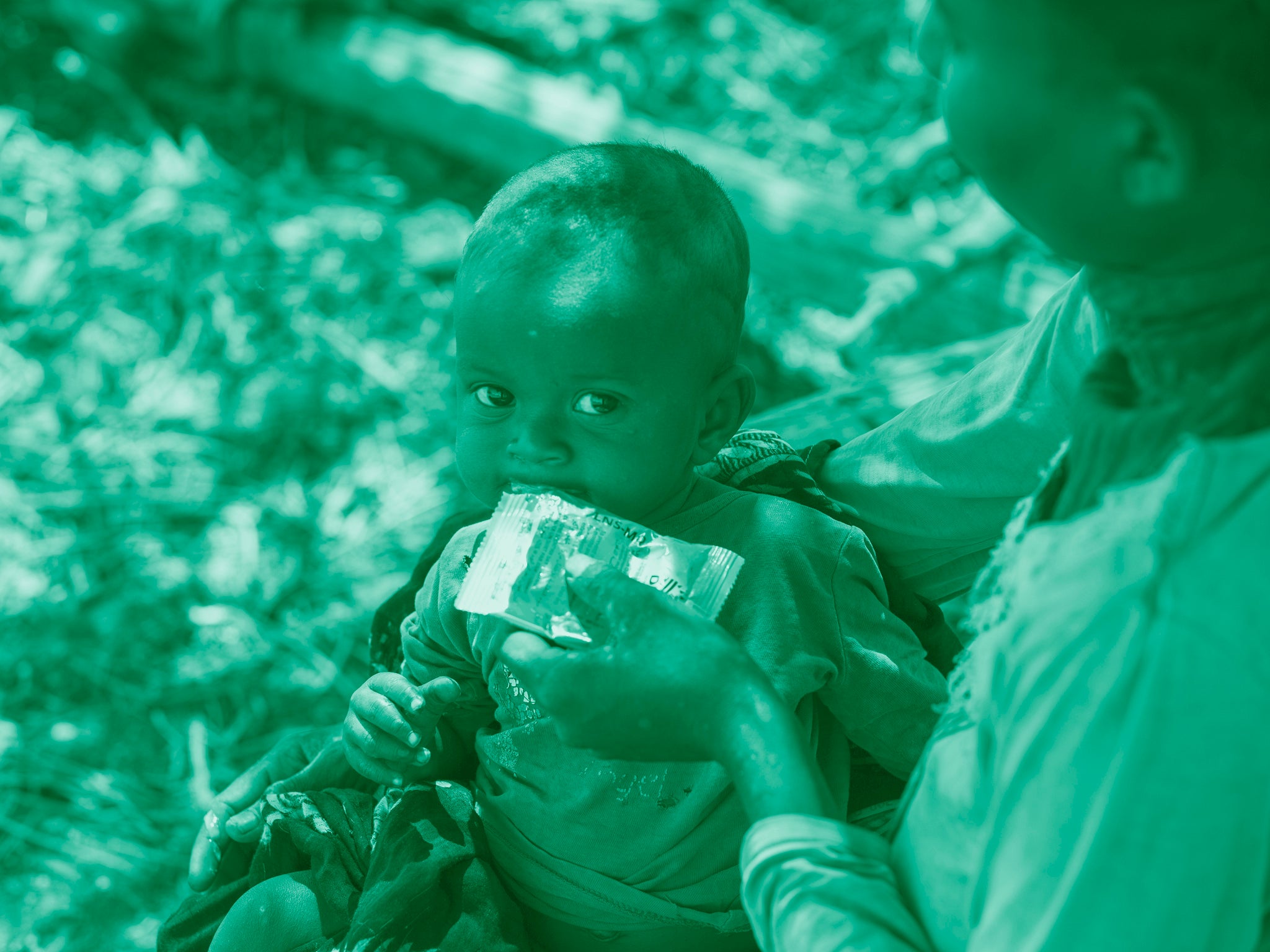What is happening in Madagascar and why is country on the verge of world’s first climate-induced famine?
Months-long drought is forcing people to extreme measures, such as eating cacti normally fed to cattle

Your support helps us to tell the story
From reproductive rights to climate change to Big Tech, The Independent is on the ground when the story is developing. Whether it's investigating the financials of Elon Musk's pro-Trump PAC or producing our latest documentary, 'The A Word', which shines a light on the American women fighting for reproductive rights, we know how important it is to parse out the facts from the messaging.
At such a critical moment in US history, we need reporters on the ground. Your donation allows us to keep sending journalists to speak to both sides of the story.
The Independent is trusted by Americans across the entire political spectrum. And unlike many other quality news outlets, we choose not to lock Americans out of our reporting and analysis with paywalls. We believe quality journalism should be available to everyone, paid for by those who can afford it.
Your support makes all the difference.Thousands of people in Madagascar are at risk of famine in the coming months and more than 1 million more are suffering severe hunger, according to the United Nations.
Successive droughts and failed harvests have forced people to eat leaves, cacti and insects, and the UN says it is the first impending famine that cannot be blamed even in part on war.
Some children in the south of the country arrive at aid stations too weak even to cry, according the body’s World Food Programme.
What is the famine situation in Madagascar?
The World Food Programme (WFP) said on Tuesday that some 14,000 people in southern Madagascar were “one step away from famine”.
These people are on the fifth stage of a five-stage
However, this figure is expected to double by the end of the year, and some 500,000 children are expected to be malnourished by April 2022.
In addition, there are about 1.1 million more people experiencing severe hunger.
The WFP said it had been giving emergency food packages to 700,000 people per month, but added that it needs more money to scale up its response.
What is the definition of famine?
According to Unicef, there are three elements to the agreed-upon definition of famine. They are:
- At least one in five affected households can access just one or two basic types of food; for example, they may have a small amount of vegetables but no grains or meat
- More than 30 per cent of under-fives are acutely malnourished
- More than four in every 10,000 children in the affected group are dying every day
To what extent did drought create Madagascar’s problem?
Southern Madagascar is in the grip of its worst drought for 40 years and aid officials fear it will only continue.
The WFP said this week: “Amidst the hottest decade on record, Madagascar has suffered from exceptionally warm temperatures, deficits in rainfall and unexpected sandstorms that have covered fields, left crops wilted and harvests well below average.
“By April 2021, 70 per cent of the Grand Sud was in drought with food production only one-third of the last five-year average. The forecasted dry start to the upcoming planting season means families will not be able to sow their fields immediately and their access to food and an income hangs in the balance.
“Adding to an already dire situation, a recent upsurge of locusts is expected to affect an estimated 400,000 hectares of land.”
The Grand Sud region, which covers the southern tip of the world’s fourth-largest island, saw less than half its normal rainfall between November 2020 and January 2021.
Rainfall has been erratic in Madagascar for years, and below average for almost six, according to the University of California at Santa Barbara. And, the Intergovernmental Panel on Climate Change says, temperatures in southern Africa are rising at double the global rate.
An ancillary problem has been the restriction of movement enforced during the coronavirus pandemic, a WFP spokesperson told The Independent. Many people in rural areas would normally move, even if only temporarily, to urban centres to find work and food, but this has not been the case due to lockdowns.
Madagascar is also a very poor country, regularly afflicted by both drought and cyclones.
Is this the world's first climate-induced famine?
The UN says it will be if famine is officially declared.
In no other famine has climate or weather been the primary driver and conflict absent as a cause, according to the WFP spokesperson.
Deavid Beasley, executive director of the WFP, said in an interview this week that this desperate situation is “the beginning of what we can expect” to see as the effects of global heating become more pronounced.
“Madagascar is not an isolated incident,” he said. “The world needs to look to Madagascar to see what is coming your way and [to] many other countries around the world.”
Mr Beasley said that, in a worst-case scenario, some 216 million people worldwide might be displaced by climate shocks.
At Cop26, there was an apparent admission that farming in Madagascar was being disrupted by the climate crisis. Alok Sharma, the summit’s president, spoke of Malagasy women facing “a bleak future” of being unable to grow crops.
Join our commenting forum
Join thought-provoking conversations, follow other Independent readers and see their replies
Comments